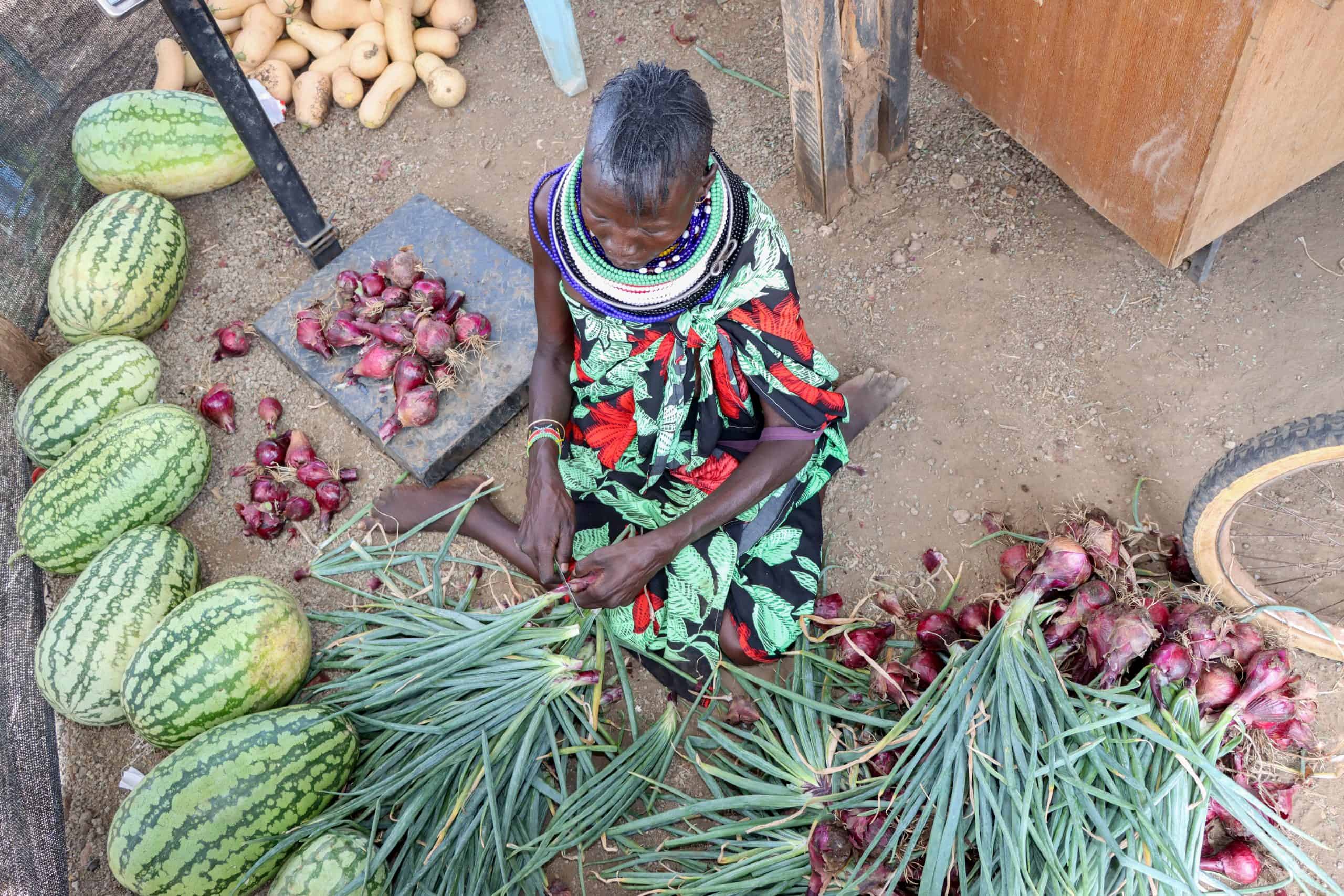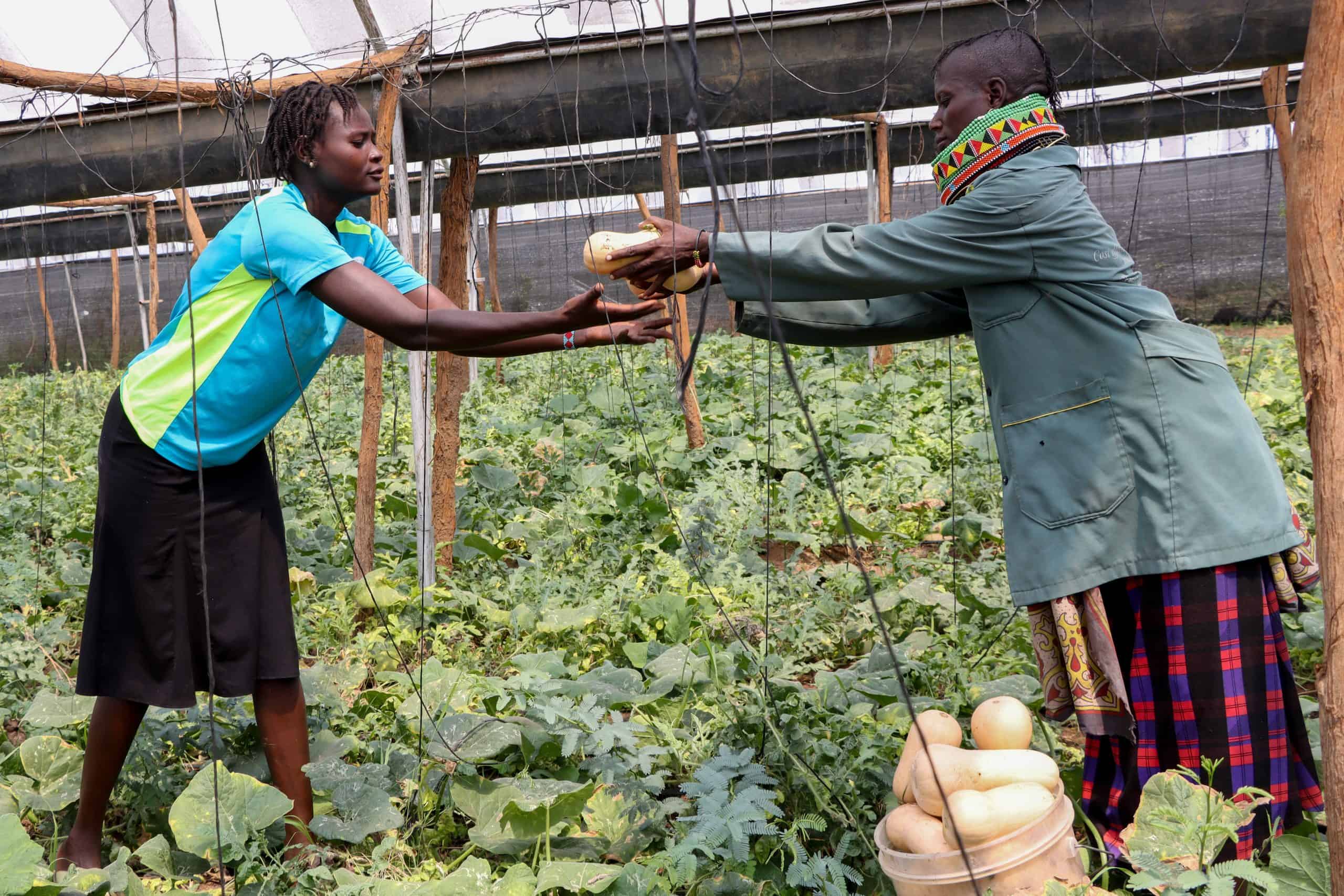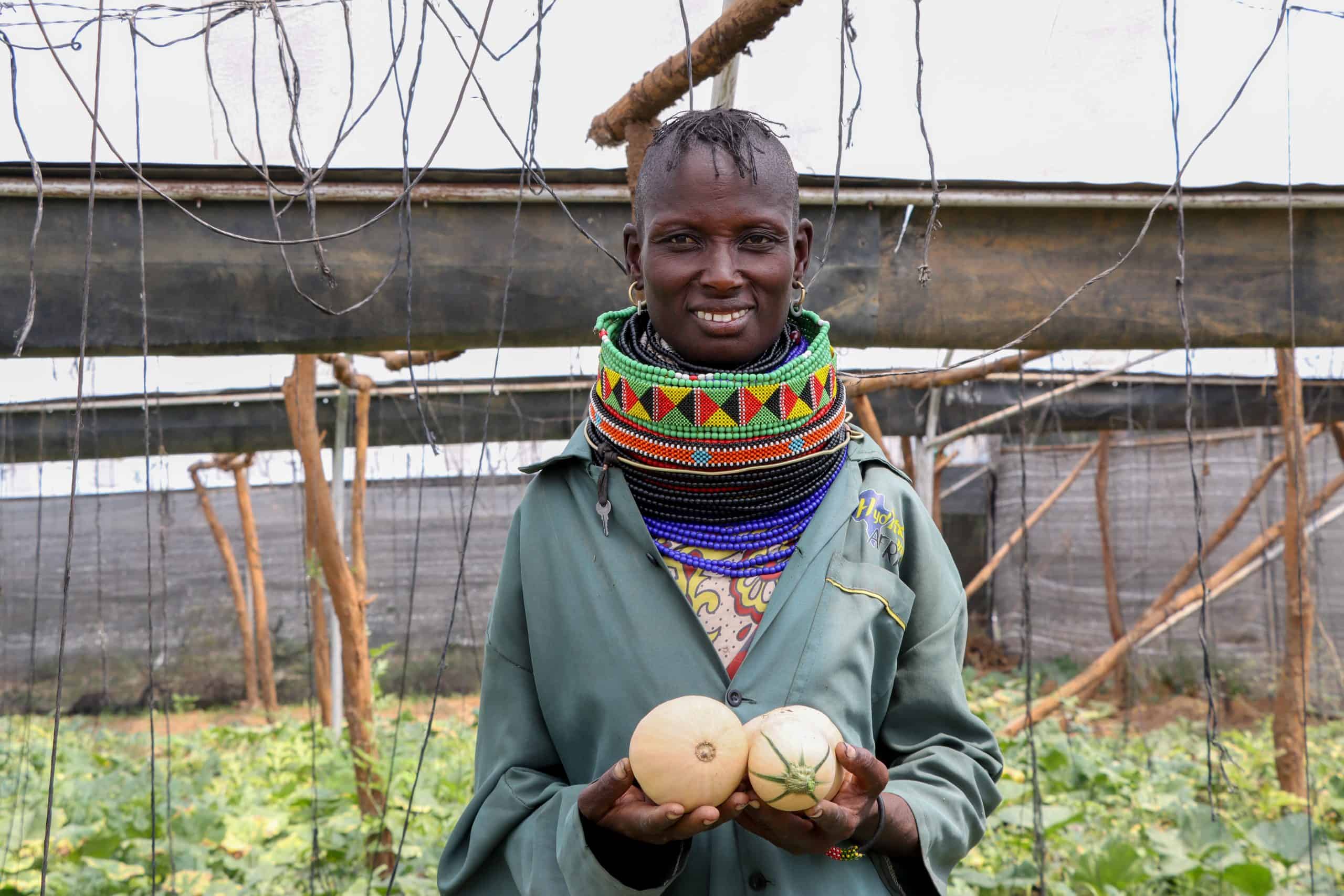For generations, the vast, arid terrain of Kenya’s Turkana County was deemed unsuitable for agriculture. But a quiet transformation is underway, driven by innovative agribusiness and a commitment to empowering refugees and host communities.
Hydroponics Africa Limited is proving that investment can unlock potential even in harsh environments. Using climate-smart hydroponics, the company has turned 43 acres in Letea, Turkana West, into productive fields of tomatoes, onions, watermelons, and butternut squash.
The system uses 80 percent less water, requires less land and labor, and produces higher yields. Founder and CEO Dr. Peter Chege says the method is ideal for dry areas like Kakuma, where rainfall is unpredictable.
“Kakuma is a dry area with irregular rainfall. Hence, hydroponics can be used to grow food throughout the year to meet the high demand in the area,” he says.
Before Hydroponics Africa arrived, vegetables were scarce. Residents traveled over 40 kilometers to Kakuma Town for produce, incurring high transport costs. Now, locals can buy fresh vegetables nearby or grow their own after training at the demonstration farm. Produce is also sold in markets beyond Kakuma, including Uganda.

Dr. Chege launched operations in Kakuma after identifying high demand and underused agricultural land. With five acres provided by the community and support from the Kakuma Kalobeyei Challenge Fund (KKCF), the company drilled boreholes, built greenhouses, and installed hydroponic systems.
Convincing the community, mostly pastoralists, was difficult. But KKCF helped define the market and promote high-value crops. “The grant and additional technical support helped us advance our concept to the community who, after seeing the impact, allowed us to expand from the initial five acres to 43,” says Dr. Chege.
The benefits extend beyond farming. A borehole now supplies clean water to 500 households, improving health and reducing waterborne diseases. Hydroponics Africa also promotes gender equality and has systems in place to address gender-based violence.
Its contract farming model trains 600 farmers in crop management, entrepreneurship, and post-harvest handling. Farmers gain access to inputs, markets, and a 40:60 revenue-sharing model. Women make up 60 percent of the participants.
Hellen Echor, a mother of seven from Atir village, exemplifies the impact. Despite physical challenges, she works in produce aggregation and now grows crops at home with her children. “The training gave me skills to grow food for my family,” she explains, “and the wage helps me pay school fees and provide for our needs.”

Lead agronomist Fidelis Mwenda Kioko says, “We start by training them in traditional farming, its advantages and disadvantages, and then shift to climate-smart agriculture. We also teach them about crop management, pest and disease control, handling post-harvest losses, and how to practice farming as a business.”
The farm directly employs 15 people and supports hundreds more.
Hydroponics Africa has also introduced drought-resistant Napier grass for livestock feed. The fast-growing grass reduces desertification and enables zero grazing. One acre can yield up to 200 tons.
KKCF supported the company through its private sector window, which helps businesses expand while benefiting refugee and host communities. “You cannot continue sustaining refugees with humanitarian aid. The right way is to bring on board the right private sector actors so that they can create opportunities for sustainable economic development in the region,” says Fredrick Kiio, Head of Agribusiness at AECF.
Looking ahead, Hydroponics Africa plans to expand by acquiring 84 more acres and scaling its contract farming model. Its work in Turkana shows what is possible when innovation meets community-driven investment.
